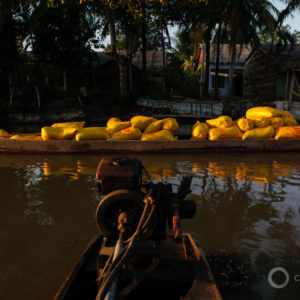The Stream, August 2: Flint Water Contamination Caused By Lack of Corrosion Control, Study Confirms
The Global Rundown
A study examining the causes of lead contamination in Flint, Michigan supports claims that corrosion control measures could have prevented a public health crisis. Voluntary measures to address the nutrient pollution that causes algal blooms and dead zones in the Great Lakes and the Gulf of Mexico are not working, according to a leading researcher. Water insecurity is extending into India’s Himalayas, conservationists say. North Dakota is asking the federal government for millions of dollars to reimburse costs related to the Dakota Access oil pipeline protests. Environmental groups in Wisconsin warn that state legislation to ease the construction of a new factory could jeopardize wetlands.
“We are used to being in a remote place. We have our traditional ways of living. But these days the water is not coming like it used to. The seasons are changing. We see there is less water than before.” –Nawang Phunchok, a farmer in the Spiti region of India’s Himalayas. Environmentalists say more attention should be paid to water security in remote areas like Spiti, not just in major agricultural areas. (Reuters)
In context: As the Himalayan glaciers disappear, 10 major Asian river systems are threatened.
By The Numbers
$14 million Amount North Dakota is asking the federal government to reimburse it for costs associated with protests against the Dakota Access oil pipeline. The protests were largely driven by concerns about water contamination. Associated Press
$10 billion Cost of an LCD flat-screen factory planned for southeastern Wisconsin. Environmental groups warn that the project could harm wetlands as the state considers legislation that would waive certain permit requirements related to wetlands and waterways. Reuters
Science, Studies, And Reports
A new study by researchers at the University of Michigan details how lead was able to leach into water supplies in Flint, Michigan, triggering a public health crisis. The study confirmed that the contamination was caused by a failure to treat the city’s water with substances that control metal corrosion, allowing lead to leach from service lines into the drinking water. As a result, approximately 36 micrograms of lead per liter of water flowed into homes during the crisis, researchers found. PBS NewsHour
In context: Expert council recommends eliminating lead drinking water lines.
On The Radar
Nutrient pollution is once again set to fuel large blooms of toxic algae in Lake Erie and create a massive, low-oxygen “dead zone” in the Gulf of Mexico this summer. Voluntary measures to address these issues, however, are “not even making modest dents in nutrient pollution,” writes Donald Scavia, a professor of environmental engineering at the University of Michigan. The Conversation
In context: World stands by as algae and dead zones ruin water.
A news correspondent for Circle of Blue based out of Hawaii. She writes The Stream, Circle of Blue’s daily digest of international water news trends. Her interests include food security, ecology and the Great Lakes.
Contact Codi Kozacek





